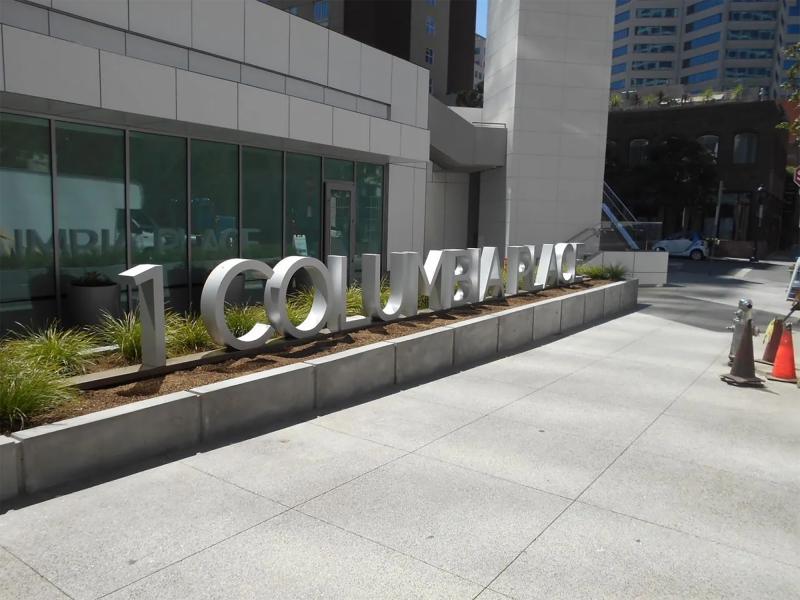Beyond Aesthetics: How Architectural Signs Shape User Experience

In the world of
architecture, design goes far beyond the structure itself. Every detail, from
the materials used to the layout of the space, is meticulously planned to
create a cohesive experience for the user. One crucial, yet often overlooked
element, is architectural signage. These signs are not merely functional tools;
they play a critical role in shaping how people navigate and experience spaces.
In this blog,
we’ll explore how architectural signage influences user experience, extending
beyond its aesthetic appeal to become an essential component of thoughtful
design.
1. More Than
Just Directions: The Purpose of Architectural Signage
Architectural
signage is typically associated with wayfinding—helping people navigate through
a building or complex space. However, signage does much more than point people
in the right direction. Well-designed signs contribute to the overall
experience by blending seamlessly with the architecture, reinforcing the
building’s identity, and even evoking emotions.
For example, in
hospitals, signage is designed to be clear and intuitive, reducing stress for
patients and visitors. In contrast, in a luxury hotel or resort, signage might
be more elegant and subdued, in line with the overall ambiance of the space.
2. Creating
Seamless Wayfinding Experiences
Effective
wayfinding is at the heart of good user experience in architecture. Imagine
visiting an unfamiliar airport, hotel, or university campus. The ease with
which you find your way around directly impacts how comfortable and confident
you feel in the space.
Architectural
signage plays a significant role in this. Clear, concise, and strategically
placed signs reduce frustration, ensuring that users move through a space
effortlessly. Poorly designed or confusing signage, on the other hand, can
cause stress, frustration, and even feelings of being lost—detracting from the
overall experience.
3. Signage
as an Extension of Architectural Design
When signage is
integrated into the architectural design process early on, it enhances the
overall aesthetic of a space. Rather than being an afterthought, it becomes an
extension of the building's identity.
Take, for
instance, the signage at cultural institutions like museums or art galleries.
These signs often reflect the style, period, or theme of the exhibits while
guiding visitors. Whether through typography, materials, or lighting, signage
can harmonize with the architecture, creating a cohesive visual experience.
In many modern
designs, signage is also interactive, using digital elements that provide
real-time information, further enhancing user experience.
4. Communicating
Brand and Identity
Architectural
signage also serves as a visual representation of a brand’s identity. In
corporate offices, universities, or retail spaces, signage is a critical
element that communicates a sense of place, purpose, and brand values.
Consider a
corporate headquarters where the signage reflects the company's ethos through
minimalistic, clean designs and modern materials. The signage communicates
professionalism, innovation, and attention to detail—aligning with the
company’s image.
Similarly, in
retail environments, signage influences customers' perception of the brand. A
store with cohesive, well-branded signage creates a seamless and engaging
shopping experience, leaving a lasting impression.
5. Emotional
and Psychological Impact
Signage has the
power to influence emotions, whether it be creating a sense of calm in a
healthcare setting or excitement in a sports arena. The tone of the message,
the colors used, and even the placement of the signs contribute to the
psychological and emotional experience of users.
In spaces where
emotions run high, such as hospitals, airports, or large transportation hubs,
signage must be designed with empathy. Clear, straightforward signs reduce
anxiety and provide reassurance, while thoughtful design choices—such as soft
colors and clear, legible fonts—help foster a sense of calm.
6. Sustainability
and Innovation in Signage
As
sustainability becomes a growing concern in architecture, signage is also
evolving. Architects and designers are increasingly using eco-friendly
materials for signage, such as recycled metals, wood, and energy-efficient
lighting solutions like LEDs.
Digital signage
is another innovative solution that enhances user experience. Interactive
kiosks, for example, offer wayfinding support in real time, reducing the need
for printed materials while providing users with up-to-date information. These
systems can adapt to changing conditions, offering dynamic solutions in places
like airports, where gate changes or delays are common.
Conclusion:
The Invisible Influence of Architectural Signage
Though
architectural signage often goes unnoticed, it has a profound impact on how
people experience and navigate the built environment. Beyond aesthetics,
effective signage contributes to wayfinding, enhances brand identity,
influences emotions, and even promotes sustainability.
When integrated
thoughtfully, architectural signage becomes an essential part of the user
experience, making spaces not only easier to navigate but also more engaging
and memorable.

Comments